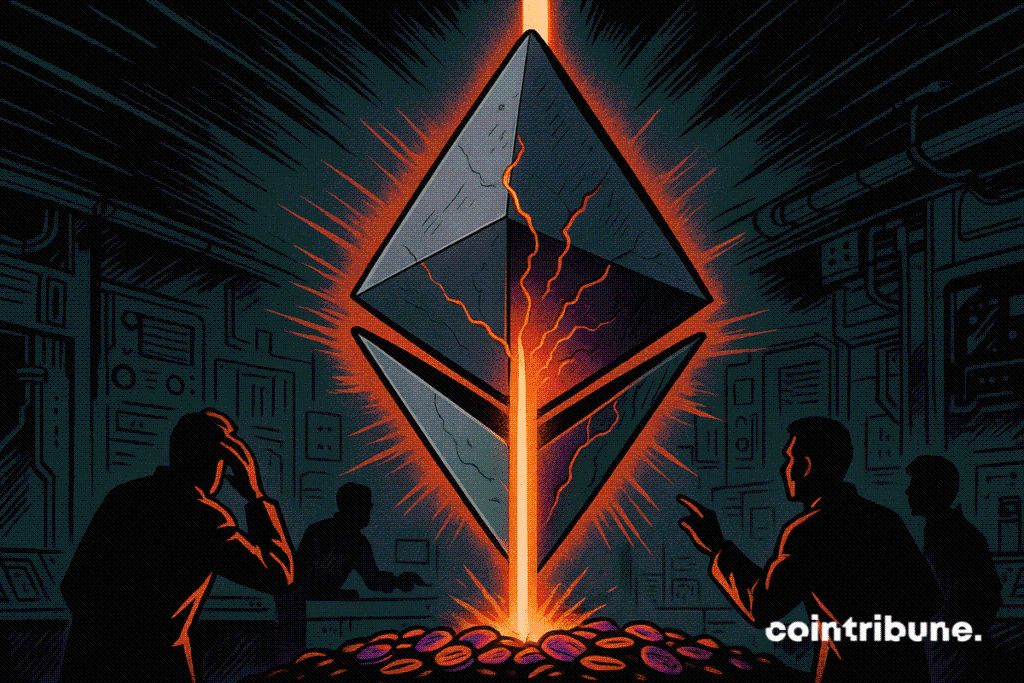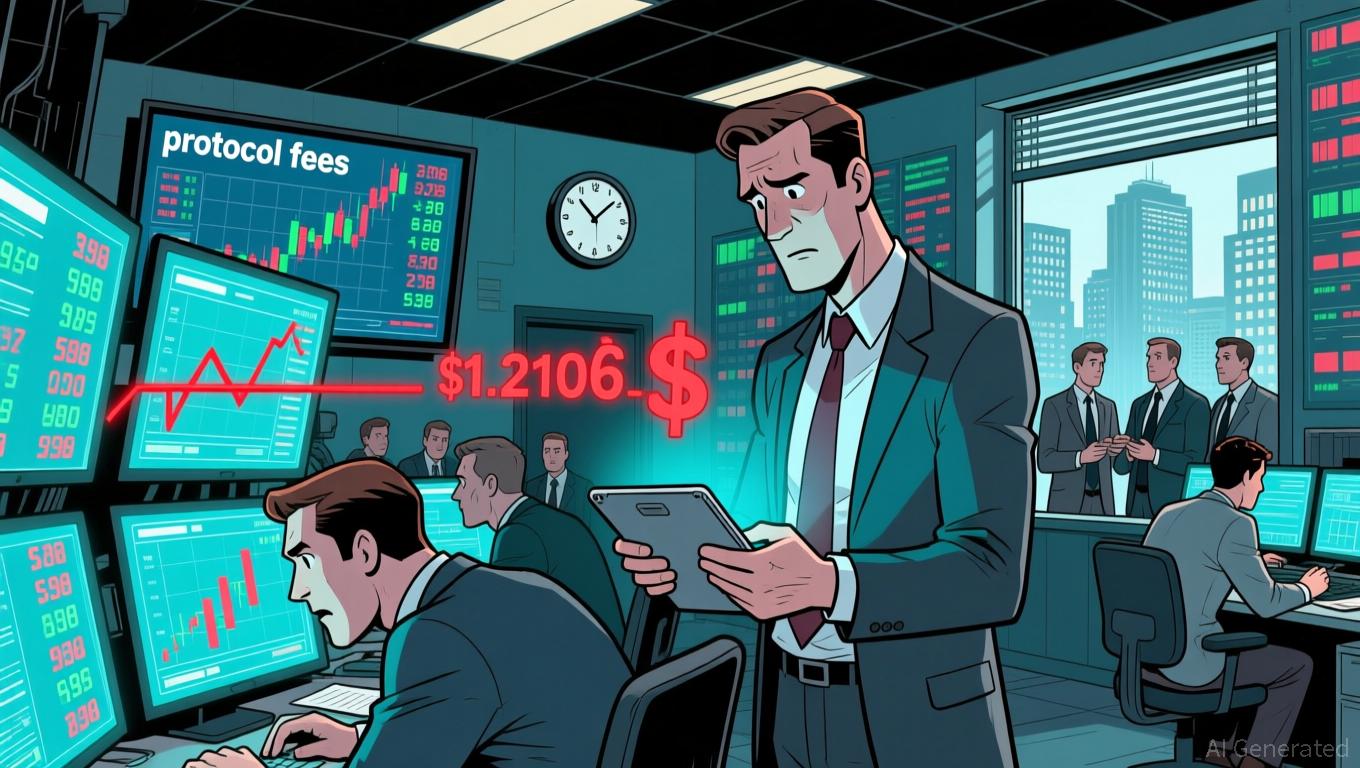Report Questions Ethereum’s Leadership And Vision
What if technology is no longer enough ? Despite its technical lead, Ethereum falters, not on its foundations, but on its narrative. This is the troubling finding of the “Project Mirror”, a study commissioned by the Ethereum Foundation, which reveals a deep unease: without a clear vision or a mobilizing narrative, the network loses momentum, attractiveness, and coherence. Behind the promises of Web3, a perception crisis is settling in.

In brief
- A groundbreaking study reveals unease at the heart of the Ethereum ecosystem, where technology alone is no longer sufficient to unite.
- Project Mirror highlights a perception crisis fueled by an absent or overly complex narrative.
- Five major tensions weaken Ethereum, including unclear leadership, lack of support for creators, and an ambiguous role for layer 1.
- The psychology of actors weighs as much as price in Ethereum’s dynamics, according to the study’s researchers.
An ecosystem losing its narrative bearings
The study “Project Mirror”, conducted between March and June, set out to capture the perception of the Ethereum ecosystem at one of its most critical moments, as the crypto just regained the top spot in USDT .
According to the Ethereum Foundation’s own words, the goal was to “understand how different audiences perceive Ethereum, identify challenges and strengths, and feed that back to the ecosystem so we can learn from it.”
Conducted by Valeria Salazar and Jill Gunter, the study relied on 60 qualitative interviews covering the entire community, in a difficult market context, with ETH fluctuating between $1,600 and $2,500 and hitting a three-year low in April.
The conclusions of the report reveal five major tensions weakening the perception of the Ethereum network. These weaknesses do not stem from technology, but from how the ecosystem tells its story, or fails to tell it. Here are the report’s main findings :
- An absent or overly complex narrative : the researchers state that “without price dynamics or a simple narrative, Ethereum’s sophisticated vision appears brilliant but unreadable.” ;
- An ambiguous role of Ethereum layer 1 : as Layer 2s absorb users and activity, Ethereum’s fundamental role becomes unclear ;
- Insufficient institutional communication : the project lacks a clear and coherent message capable of uniting developers and users around a shared vision ;
- A challenge in reconciling neutrality and leadership : the desire to remain neutral sometimes prevents the Ethereum Foundation from defining a strong and clear direction ;
- Support deemed too weak for ecosystem players : some testimonials highlight a lack of structure, incentives, and guidance for those building on Ethereum.
Taken together, these elements highlight a crisis of narrative and strategic positioning, weakening Ethereum’s ability to attract talent, capital, and new crypto projects, despite an always technically advanced architecture.
When price becomes the dominant narrative
Price dynamics remain the main driver of the perceived narrative in the crypto ecosystem. “In crypto, price makes the narrative, and stagnation is perceived as a form of immobility,” note the researchers. In other words, no matter the technical advances: if the ETH price remains flat, the dominant perception will be of a project losing momentum.
This point is all the more marked as the study was conducted at a time when ETH struggled to regain upward momentum, despite active development on the long-term roadmap.
The researchers do not offer solutions, but open the debate : should the ecosystem leadership be redefined? Can success indicators other than price be designed? How to make a complex vision more accessible without diluting it ?
They emphasize the need to open collective reflection, particularly on how to support developers, unite users, and better embody Ethereum’s vision in a narrative understandable by all.
While ETH reached a new ATH at $4,950 , this temporary improvement should not mask the structural vulnerabilities identified by the study. While price dynamics can temporarily silence critics, they do not replace a clear, shared, and embodied vision. This report invites thinking about Ethereum beyond technology and the market, placing at the heart of the project what is sorely missing today: a strong narrative, a unifying communication strategy, and the ability to engage the community in something other than the price curve.
Disclaimer: The content of this article solely reflects the author's opinion and does not represent the platform in any capacity. This article is not intended to serve as a reference for making investment decisions.
You may also like
DASH surges 30.39% over the past week amid strategic growth moves and positive analyst revisions
- DoorDash's DASH stock fell 10.59% in 24 hours but surged 30.39% in 7 days, driven by a strategic Old Navy partnership expanding retail delivery services. - Acquisitions of Deliveroo and autonomous delivery partnerships with Coco Robotics, plus $10.72B revenue and 49.2% gross margin, strengthened market leadership. - Analysts raised price targets to $260 with "Outperform" ratings, citing growth potential despite a high 98.1 P/E ratio reflecting market optimism. - Technical analysis shows bullish reversal
Aster News Today: Optimism Faces Prudence: ASTER Approaches $1.21 Following RSI CEO's 16% Stake Sale
- Aster (ASTER) rose 8% toward $1.21 as Binance-backed DEX hit $3T in cumulative trading volume. - RSI CEO sold 16% stake ($11M+), raising doubts despite Q2 revenue growth (19.7%) and EPS beat. - ASTER faces mixed signals: bullish triangle pattern vs. declining fees, 50% open interest drop, and stagnant adoption. - Analysts remain divided: RSI's 22% YTD gain contrasts with ASTER's uncertain breakout potential amid waning trader enthusiasm.

The ChainOpera AI Token Crash: An Urgent Warning for Cryptocurrency Projects Powered by AI
- ChainOpera AI's COAI token collapsed 96% in late 2025, exposing systemic risks in AI-driven DeFi ecosystems. - Centralized governance (10 wallets controlled 87.9% supply) and misaligned incentives exacerbated panic selling during crises. - Technical flaws included untested AI models with 270% increased vulnerabilities and inadequate smart contract security audits. - Regulatory shifts like the GENIUS Act compounded liquidity challenges, highlighting the need for compliance-ready AI crypto projects. - Inve

How large a portion of the AI data center surge will rely on renewable energy sources?
